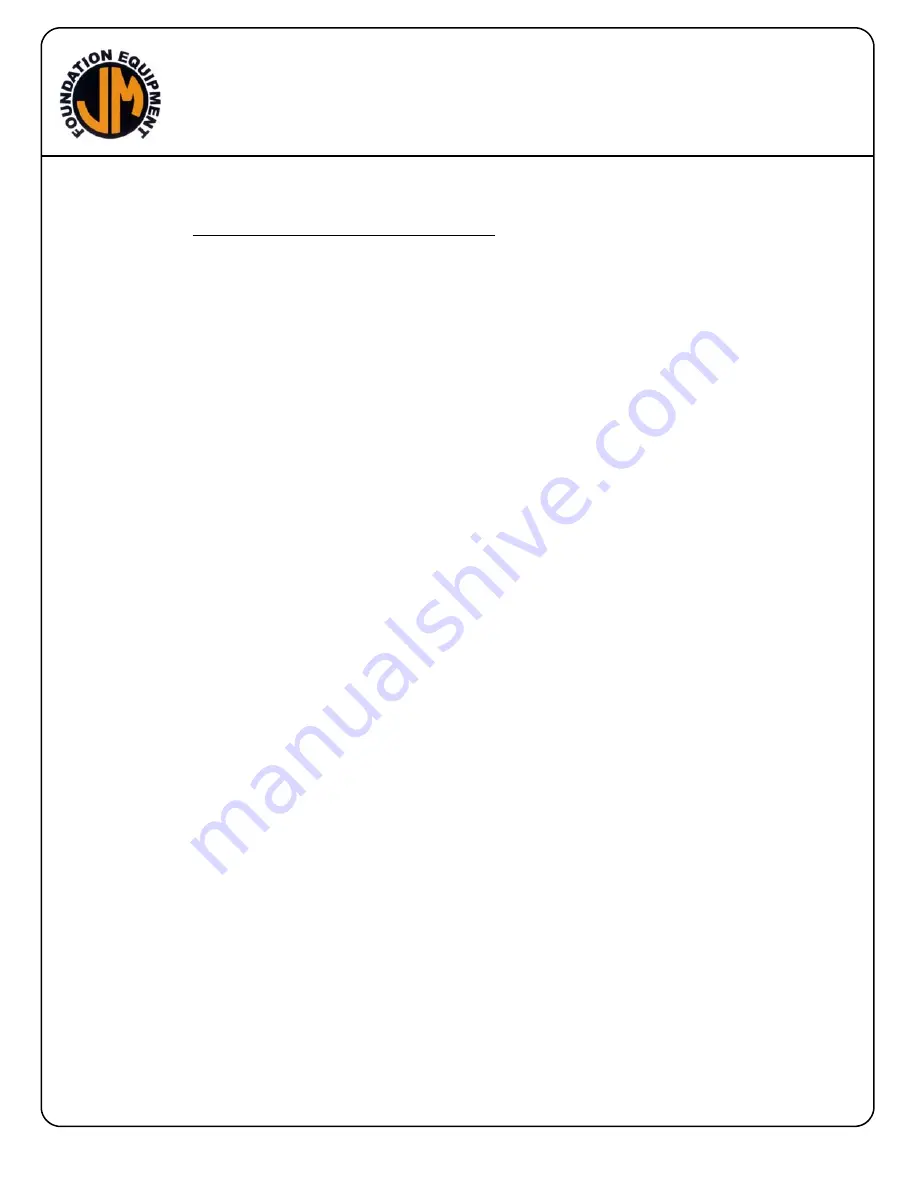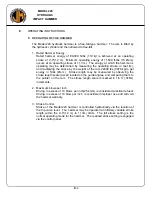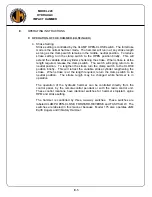
MODEL 220
HYDRAULIC
IMPACT HAMMER
II.
PREPARATION FOR OPERATION
B. SAFETY PRECAUTIONS (CONTINUED)
37. Rounded or damaged bolt heads or nuts should be replaced so that proper torque
values may be obtained. Proper torque values are necessary to prevent parts on
this equipment, leads and crane boom from loosening and falling. Refer to Torque
Chart, in the manual, for proper values.
38. Always be sure that the crane line is aligned with the centerline of the pile. Do not
side load crane boom or hammer. Dangerous crane boom, or hammer, damage
may result.
39. Use tag line to control hammer whenever possible.
40. When driving “batter” piles, insure that the leads, and crane boom, have sufficient
bending strength to handle the worst case load. Consult J&M.
41. Do not attempt to service hydraulic accumulators without first venting all high
pressure gas from these units.
42. Pre-charge accumulators only to pressures specified, and only with Nitrogen gas.
43. Pile ends must be cut square, and flat, before cushion material and/or drive cap are
placed onto pile.
44. Use only pile caps that are correctly sized for the type, cushion material and pile
size being driven.
45. Before starting driving operations, check that the hammer, striker block and pile cap
are properly aligned with the centerline of the pile. Dangerous lateral forces,
generated by misalignment, may damage hammer or break piling, with resultant
hazard from falling objects.
46. Stay well clear of ram point, pile cap and striker block. Fragments of metal may be
broken, or spalled off, and ejected at high speed.
47. Large amounts of heat are generated, within cushion material, during driving.
Cushion material, or flammable materials in the vicinity, may ignite. Personnel
should use extreme caution, and avoid contact with ram point, cushion material and
drive cap.
48. It is the responsibility of the contractor to determine what, if any, hazardous
materials, or gases, may be emitted from cushion materials due to deterioration,
decomposition, excessive temperature or combustion. Contact the cushion
material manufacturer.
49. Frequently inspect and tighten the wire ropes, wire rope clips and pins that secure
the drive cap to the hammer. Replace these components at the first sign of wear or
fatigue. Tighten clips regularly.
REMEMBER, SAFETY IS EVERYONE’S BUSINESS.
II-3
Summary of Contents for 220
Page 2: ...MODEL 220 HYDRAULIC IMPACT HAMMER ...
Page 4: ...MODEL 220 HYDRAULIC IMPACT HAMMER ...
Page 24: ...MODEL 220 HYDRAULIC IMPACT HAMMER ...
Page 48: ...MODEL 220 HYDRAULIC IMPACT HAMMER ...
Page 52: ...MODEL 220 HYDRAULIC IMPACT HAMMER ...
Page 54: ...MODEL 220 HYDRAULIC IMPACT HAMMER V HYDRAULIC CIRCUITRY HYDRAULIC SCHEMATIC V 4 ...
Page 59: ...MODEL 220 HYDRAULIC IMPACT HAMMER VI ELECTRICAL CIRCUITRY ELECTRICAL LAYOUT VI 4 ...
Page 60: ...MODEL 220 HYDRAULIC IMPACT HAMMER VI ELECTRICAL CIRCUITRY ELECTRICAL SCHEMATIC VI 5 ...
Page 65: ......
Page 66: ......
Page 67: ......
Page 68: ......
Page 69: ......
Page 70: ......
Page 71: ......
Page 72: ......
Page 75: ......
Page 76: ......
Page 78: ......
Page 80: ......
















































